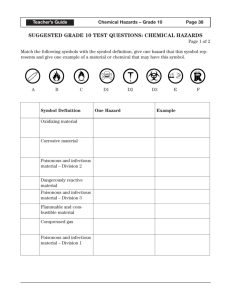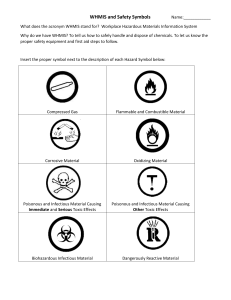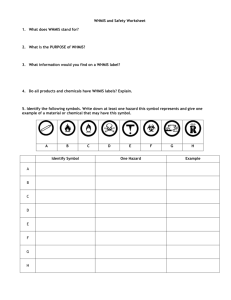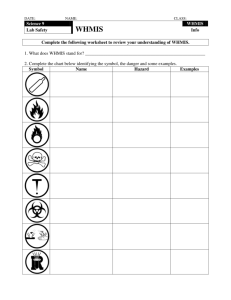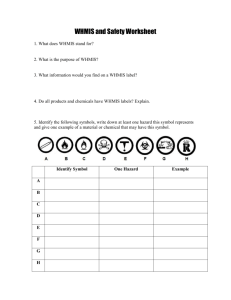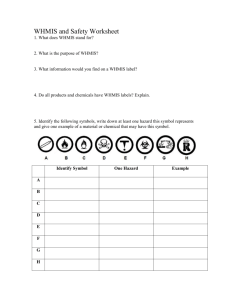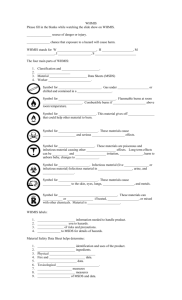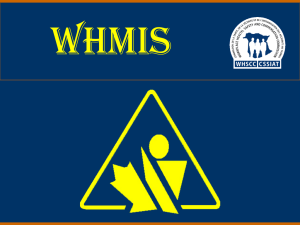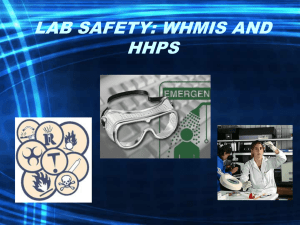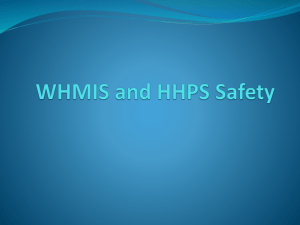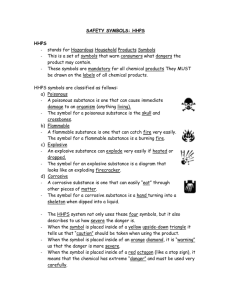suggested grade 10 test questions: chemical hazards
advertisement
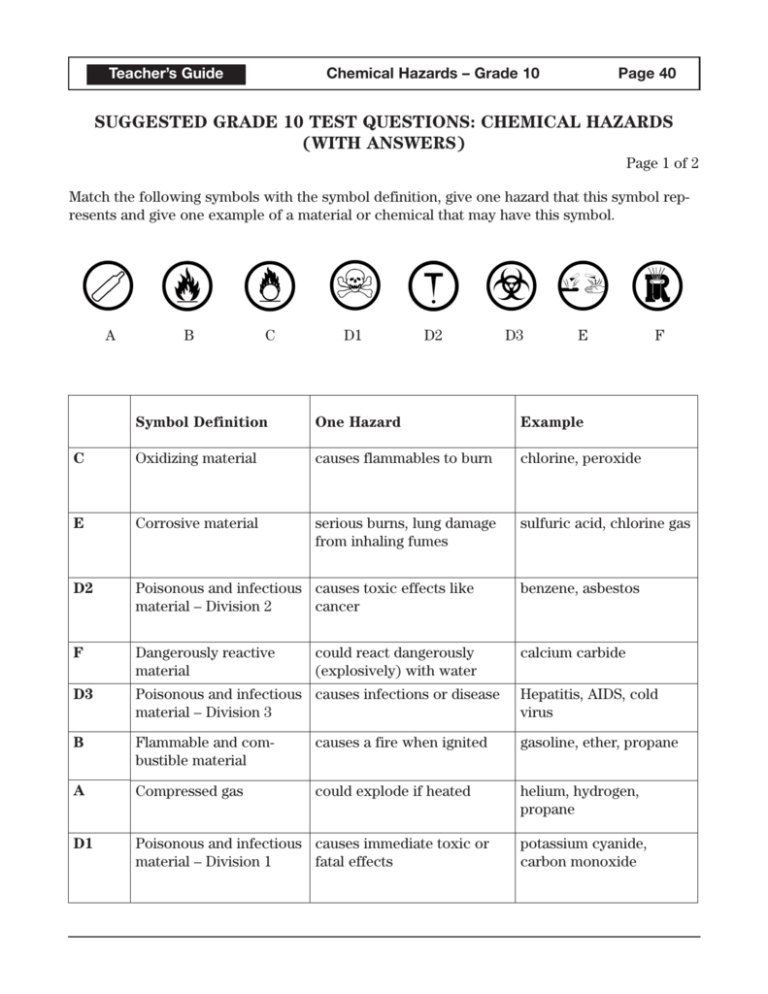
Chemical Hazards – Grade 10 Teacher’s Guide Page 40 SUGGESTED GRADE 10 TEST QUESTIONS: CHEMICAL HAZARDS (WITH ANSWERS) Page 1 of 2 Match the following symbols with the symbol definition, give one hazard that this symbol represents and give one example of a material or chemical that may have this symbol. A B C D1 D2 D3 E F Symbol Definition One Hazard Example C Oxidizing material causes flammables to burn chlorine, peroxide E Corrosive material serious burns, lung damage from inhaling fumes sulfuric acid, chlorine gas D2 Poisonous and infectious causes toxic effects like material – Division 2 cancer benzene, asbestos F Dangerously reactive material calcium carbide D3 Poisonous and infectious causes infections or disease material – Division 3 Hepatitis, AIDS, cold virus B Flammable and combustible material causes a fire when ignited gasoline, ether, propane A Compressed gas could explode if heated helium, hydrogen, propane D1 Poisonous and infectious causes immediate toxic or material – Division 1 fatal effects could react dangerously (explosively) with water potassium cyanide, carbon monoxide Teacher’s Guide Chemical Hazards – Grade 10 Page 41 SUGGESTED GRADE 10 TEST QUESTIONS: CHEMICAL HAZARDS (WITH ANSWERS) Page 2 of 2 True/False Questions 1. WHMIS stands for Workplace Hazardous Materials Information System. T 2. All products and chemicals have WHMIS symbols. F 3. An MSDS provides less information than a product label. F 4. The main components of WHMIS are classification, labels, and MSDSs. F 5. Never eat, drink, or chew gum during a lab. T 6. When diluting acid, always add small amounts of acid to large amounts of water. T 7. The three shapes of symbols used for International Safety Symbols are diamond, upside-down triangle and circle. T 8. PPE stands for Private Protection Equipment. F 9. The two types of ventilation are general ventilation and local exhaust ventilation. T 10. Reducing the risk of injury from exposure to a chemical eliminates the hazard of the chemical. F 11. Materials that contain dangerous bacteria or viruses or the toxins these organisms produce are called infectious material. T 12. It is acceptable to inhale chemicals if you see someone doing it with no obvious ill effects. F 13. If your boss asks you to do something that you don’t know how to do, you should ask your boss for more training. T 14. Refraining from eating or drinking during a lab is a safety procedure. T 15. An eyewash fountain is not a piece of safety equipment. F
